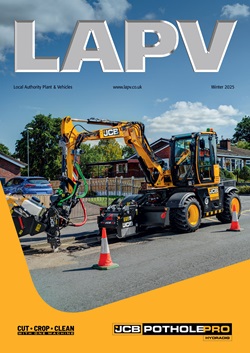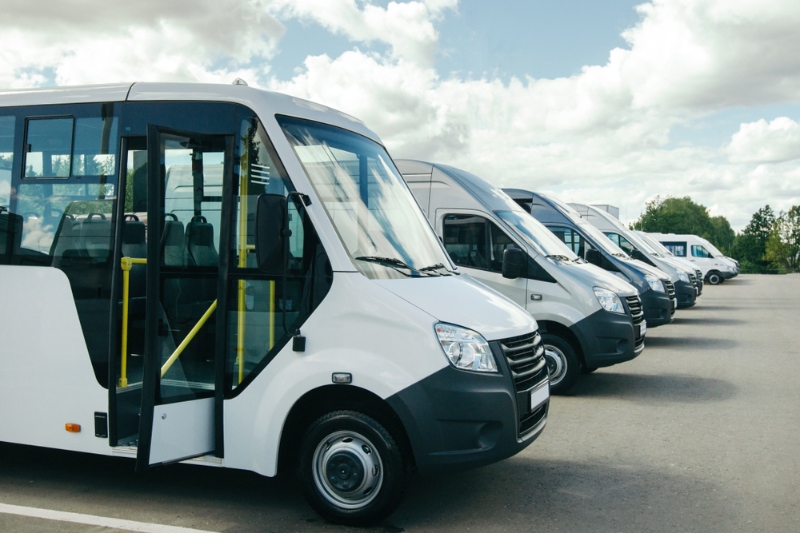There's a lot more to cutting fleet costs than simply checking fuel consumption. Preventing accidents and reducing service and maintenance costs also play a big role. One solution is to make drivers aware of their own prowess behind the wheel. A new system that relays accountibility about driving behaviour directly on to the person behind the wheel is now set to hit the UK.
Biggest risks and therefore biggest potential for saving costs is with those whose driving role is secondary to other skills, such as electricians, carpenters, plumbers and housing maintenance people, where the work they do after they reach their destination is more important than simply getting there.
Telemetry provider M-Motion has developed a solution that not only accepts the need for better fuel consumption and less hammering of the brake and accelerator pedals, but combines them all into a predictive driving monitor and recorder. What makes the technology unique is that this data is shared in real-time with the driver, so they can assess and improve their driving while they are behind the wheel.
A key element is the specially developed “anticipation” monitor that brings into play a wide range of factors vital to safe driving and road use, but which are not possible in conventional monitoring systems. This “anticipation” element evaluates driver reactions and their effects ' such as sharp braking, steering and acceleration ' and takes into account differing roads and environments.
The NEMPI system has also been given its toughest ever practical test ' meeting the extreme demands of the technicians at Volkswagen in Germany to the extent that NEMPI can be fitted without changing the terms of the vehicle's warranty.
In its simplest terms, NEMPI takes hundreds of measurements every second from the engine and other areas of the vehicle, sends it to a computer database, filters it down to the most relevant facts, and then sends it back to a screen within the vehicle cab, as well as being available for the fleet manager on whatever device he wishes to see it ' computer or laptop screen or even his mobile phone.
What NEMPI is not a “spy in the cab”. The system is based around the idea of sharing the information between the driver and the fleet manager. The ergonomically-designed in-cab screen in the cab operates on a flowing traffic light system. For example, if the braking monitor, accelerator sign, or fuel consumption measures show red, then there is a problem with the way the vehicle is being driven, and this can be simply and quickly improved by laying off the gas a little and cornering less harshly.
The fourth “anticipation” monitor takes the system to new heights: it collects data from sensors all round the vehicle, monitors and filters it and then displays it, based on the last 10 seconds of driving, to show how the driver is actually handling his task overall. Using the same red, amber and green displays, the driver can start to relax a little, do things a little smoother and just be a better driver.
At the end of the journey all the data collected from all the sensors, can be made available to the fleet manager, driver trainer or other designated people for training purposes ' and as the basis for an employee rewards system.
The benefits go far further than simply reducing fuel usage. Road safety is important for everyone and a driver who is relaxed and not forcing his vehicle into harsh braking, accelerating or cornering, will be a lot less likely to have an accident. As a direct result NEMPI plays a role in reducing accidents and injuries, and therefore time spent off work by the driver or the vehicle's time in the workshop for repairs.
Data from the engine will also help maintenance staff diagnose faults before they occur, where replacement parts are needed because of wear, and when it is the best time to bring the vehicle in for a service. Maintenance when the vehicle needs it is a lot more efficient and less expensive than relying on a simple calendar or mileage system.
Payback of the cost of installing and operating NEMPI is achieved quickly and the system keeps on saving the operator money. Where other system can be cheaper, as they do not provide the right data, they are wasting money ' if a system does not do the job it is supposed to correctly then it is a clear case of buying cheap for no benefit.
Where NEMPI provides the biggest benefit is in “mixed” driving conditions. In rural and especially in urban areas the anticipation monitor and display will help make driving more relaxed and comfortable for both the driver, vehicle engine and other road users.
NEMPI is the only third-party telemetry system to be granted Volkswagen “complicity”. By choosing Volkswagen, M-Motion went to a van manufacturer with a reputation for detailed and strict examination, and intensive testing and provenance trials. The system has passed the strict Volkswagen criteria, so it is now possible for MMotion to approach other light commercial van manufacturers.
One of the big differences between NEMPI and other monitoring systems is that NEMPI connects directly to the vehicle's CANbus, the Central Area Network computer system that is built into all today's automotive systems to maximise performance and efficiency.
It allows the system to gain access to a practically infinite number of engine and vehicle functions. Data accessed on the CANbus can include mechanical functions, such as fuel consumption, braking, acceleration, fault monitoring, wear and tear, status of other vital components, and any specific functions required by the operator.
Alternative systems access data via On-Board Diagnostics, a simpler to install method, but one that has been hounded by problems because of its “electronic” connection rather than being computer-based.
One of the difficulties to OBD-based systems have been mis-matches and conflicts of electronic functions. One of the key concepts behind the development of NEMPI is a system that will always have a positive impact with the driver, and will not involve any changes to their expectations and 'style' of driving ' other than to improve it.
The NEMPI system:
-Collects the data from the CANbus ' and any other sensors installed on the vehicle;
-Processes this raw data using unique algorithms that interrogate the data and establish the sequences that result in evaluation of effects based on actions and reactions;
-Filters the vast amount of data that is being received and establishes the format and content of the most valuable data;
-Displays the information to the driver and communicates it to secure servers, managed by NEMPI. This element of security is an important factor for commercial reasons as it denies access to confidential fleet information that could be of value to a competitor, for example.
NEMPI can be fitted within the manufacturer's factory for new build vehicles or carried out by M-Motion technicians in dealership depots and workshops.
Fuel costs are already very high and the likelihood is that they will keep rising, but pressure on transport budgets in other areas is bound to increase. So a cost-effective system that will have a positive impact on insurance costs, repairs, spare parts, maintenance and service, as well as fuel will be a welcome addition to the light commercial fleets of all users, especially local authorities.







